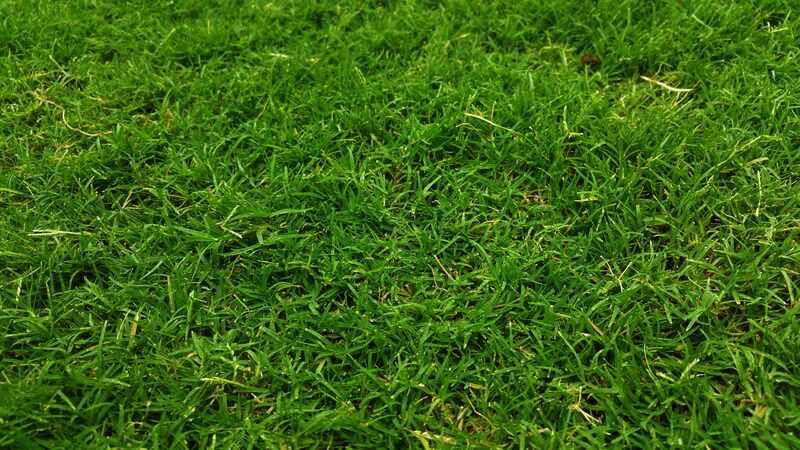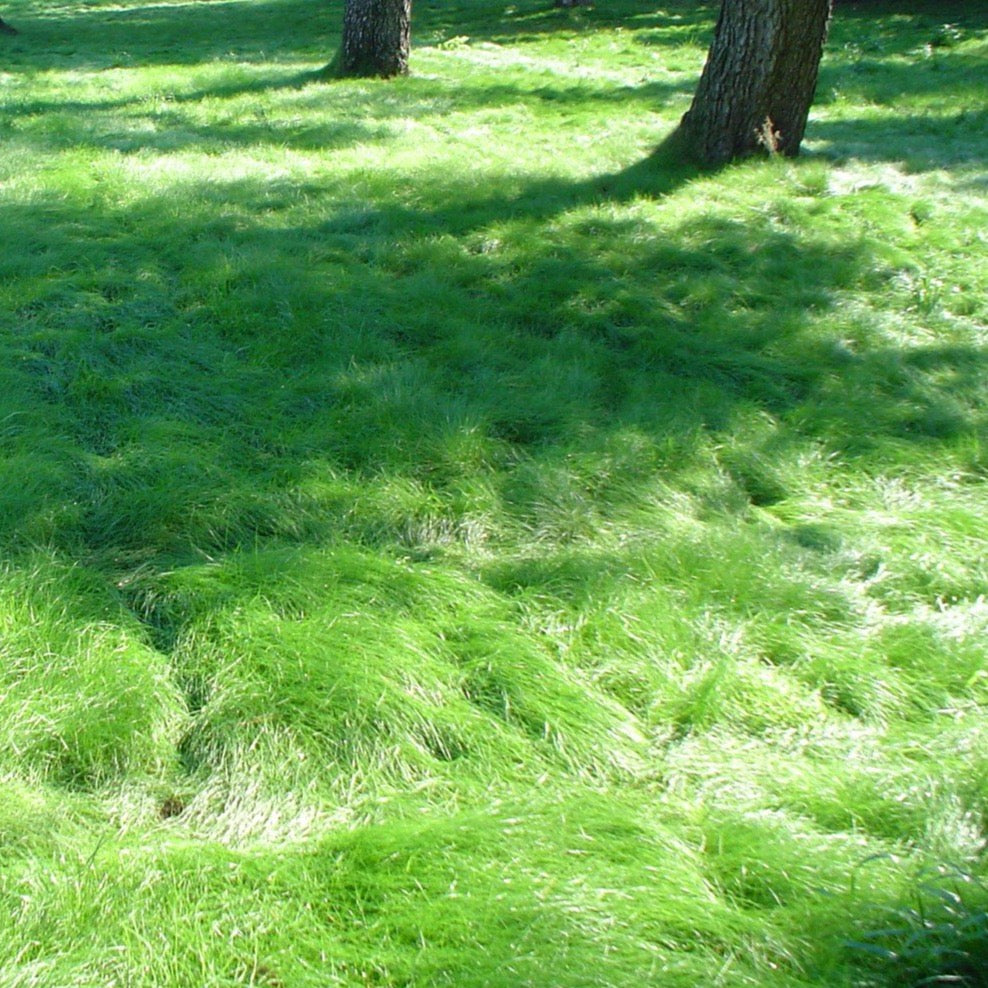Choosing the best grass to plant in California can feel overwhelming with so many options and climate challenges. But imagine stepping outside to a lush, green lawn that thrives even under the hot sun and dry spells.
That’s exactly what you want for your home, right? In this guide, you’ll discover which grass types are perfect for California’s unique weather and soil conditions. Whether you want a low-maintenance yard or a vibrant, soft lawn for your family, this article will help you make the right choice.
Keep reading to find the ideal grass that fits your lifestyle and keeps your lawn looking great all year long.
Warm-season Grasses
Warm-season grasses thrive in California’s sunny and hot climate. They grow best in late spring and summer. These grasses stay green during warm months and go dormant in winter. They use water efficiently and handle heat well. Choosing warm-season grass helps keep lawns healthy with less care.
Bermuda Grass Benefits
Bermuda grass grows fast and covers the ground thickly. It tolerates heat and drought very well. This grass recovers quickly from wear and tear. It works great for lawns, sports fields, and parks. Bermuda grass needs full sun to grow its best. It requires less water than many other grasses.
Zoysia Grass Features
Zoysia grass grows slowly but forms a dense lawn. It handles heat and drought with ease. This grass feels soft and looks lush green. Zoysia resists weeds and foot traffic. It grows well in both sun and some shade. Mowing is needed less often with Zoysia grass.
Buffalo Grass Advantages
Buffalo grass is native to dry areas and needs little water. It grows low and spreads slowly by runners. This grass stays green with less fertilizer. Buffalo grass tolerates heat and drought well. It prefers full sun and open spaces. It is a low-maintenance choice for California yards.

Credit: lawnlove.com
Cool-season Grasses
Cool-season grasses thrive in California’s cooler coastal and mountain regions. They stay green and healthy during fall, winter, and spring. These grasses slow down growth in hot summer months but recover well with watering. Choosing the right cool-season grass depends on your soil, sun exposure, and maintenance plans.
Tall Fescue Strengths
Tall fescue grows deep roots, making it drought-resistant. It tolerates heat better than other cool-season grasses. This grass stays green longer in mild winters. Tall fescue handles foot traffic well, ideal for busy lawns. It requires less watering once established. Its coarse texture suits casual landscapes and parks.
Perennial Ryegrass Qualities
Perennial ryegrass germinates quickly for fast lawn establishment. It has a fine texture and bright green color. This grass mixes well with other cool-season types. It prefers full sun but tolerates light shade. Ryegrass recovers fast from wear and damage. It needs frequent watering during dry spells to stay healthy.
Kentucky Bluegrass Suitability
Kentucky bluegrass forms a dense, lush lawn with fine blades. It spreads via underground stems, filling bare spots naturally. This grass prefers cooler, moist areas of California. It requires regular watering and fertilization for best growth. Kentucky bluegrass gives a classic green lawn look. It may struggle in hot, dry inland zones.
Drought-tolerant Options
Choosing drought-tolerant grass is smart in California’s dry climate. These grasses need less water and stay green longer. They save water and reduce lawn care costs. Below are some top drought-resistant choices and tips for a healthy, eco-friendly lawn.
Grass Types For Dry Climates
Bermuda grass thrives in heat and requires little water. It recovers fast from drought stress. Zoysia grass grows slowly but uses water efficiently. It stays lush with minimal irrigation. Buffalo grass is native and very drought-tolerant. It needs the least water among warm-season grasses. Tall fescue, a cool-season grass, handles dry spells well. Its deep roots help it survive drought conditions.
Water Conservation Tips
Water early in the morning to reduce evaporation. Use drip irrigation or soaker hoses for deep watering. Mow grass at a higher height to shade roots. This helps soil keep moisture longer. Avoid watering on windy days to prevent waste. Aerate soil to improve water absorption. Mulch around grass edges to reduce water loss.
Choosing Native Grasses
Native grasses adapt naturally to California’s climate. They need less water and fewer chemicals. Examples include blue grama and California fescue. Native grasses support local wildlife and pollinators. They create a sustainable and low-maintenance lawn. Planting natives helps maintain natural soil health. It also prevents erosion on slopes and dry areas.

Credit: www.lawnstarter.com
Shade-tolerant Grasses
Many parts of California have shaded areas in gardens and yards. Choosing grass that thrives in shade helps keep lawns green and healthy. Shade-tolerant grasses need less direct sunlight. They resist thinning and bare spots under trees or near buildings. This makes them ideal for shady California homes.
These grasses often require less water too. Their growth adapts well to limited sunlight. This saves water and reduces lawn care efforts. Shade-tolerant varieties also handle cooler temperatures better. They create lush, green spaces where other grasses fail.
Fine Fescue Varieties
Fine fescue grasses perform well in shade and cool climates. They have thin, soft blades that look dense and fine. Fine fescues include creeping red fescue, chewings fescue, hard fescue, and sheep fescue. Each type grows well in low sunlight and poor soils.
These grasses tolerate shade better than many other types. They stay green longer during dry seasons. Fine fescues also need less mowing and fertilizing. This makes them low-maintenance options for shaded lawns in California. Their deep roots help resist drought stress too.
Mixtures For Shaded Areas
Grass seed mixtures designed for shade combine several shade-loving species. These blends increase the chances of success in tricky shaded spots. A common mix includes fine fescues with some Kentucky bluegrass or perennial ryegrass. This mix balances shade tolerance and durability.
Using mixtures helps fill in thin areas faster. Different grasses in the mix cover weak spots and resist pests better. Also, the variety adapts to slight changes in sunlight and moisture. Mixtures provide a lush, green lawn under trees or next to buildings. They suit many types of shaded California yards.
Soil And Climate Factors
Choosing the best grass for California depends greatly on soil and climate factors. These elements affect grass growth, health, and maintenance needs. Understanding local soil types and climate conditions helps select grass that thrives naturally. Preparing your lawn bed properly ensures strong roots and lasting green coverage.
California Soil Types
California has diverse soil types, from sandy to clayey. Coastal areas often have sandy soils with good drainage but low nutrients. Inland regions may have heavier clay soils that retain water but drain slowly. Some areas feature loamy soils, ideal for many grass types. Knowing your soil type guides which grass species will grow best.
Regional Climate Impact
California’s climate varies from coastal Mediterranean to hot desert and mountain zones. Coastal areas have mild temperatures and moderate rainfall. Inland valleys face hot summers and cold winters with less rain. Desert regions are dry and hot most of the year. Each climate zone suits different grasses based on heat and water tolerance.
Preparing Your Lawn Bed
Start by removing weeds and debris from the planting area. Loosen the soil to improve aeration and root growth. Add organic matter or compost to enrich poor soils. Level the ground to avoid water pooling. Proper soil preparation helps grass establish faster and resist drought or pests better.

Credit: shop.stoverseed.com
Seeding And Maintenance
Seeding and maintenance play a key role in establishing a healthy lawn in California. Proper seeding ensures strong root growth and turf density. Consistent care keeps the grass green and resilient against drought and pests. Follow these simple guidelines to achieve a beautiful lawn that thrives in California’s climate.
Best Planting Times
Plant grass seeds in early spring or fall for best results. These seasons offer mild temperatures and natural rainfall. Avoid summer planting due to high heat and dry conditions. Cool-season grasses do well in fall, while warm-season grasses thrive in late spring.
Watering Schedules
Water new seeds lightly but frequently to keep soil moist. Usually, 2-3 times daily for short periods works well. Once grass grows, reduce watering to deep and less frequent sessions. Aim for 1-1.5 inches of water per week. Water early morning to reduce evaporation and disease risk.
Fertilizing Guidelines
Fertilize grass after it establishes strong roots, about 4-6 weeks post-seeding. Use a balanced fertilizer with nitrogen, phosphorus, and potassium. Follow label instructions for amounts and frequency. Avoid over-fertilizing to prevent burning and pollution. Apply fertilizer in early spring and fall for cool-season grasses.
Mowing Practices
Start mowing when grass reaches 3-4 inches tall. Set mower blade high to avoid cutting more than one-third of the grass height. Regular mowing encourages thick and healthy turf. Keep mower blades sharp to prevent tearing grass. Adjust mowing height according to grass type and season.
Common Lawn Challenges
Maintaining a healthy lawn in California can be tough. Many common challenges affect grass growth and appearance. Understanding these issues helps you choose the right grass and care methods. Pest damage, weed invasion, and diseases often cause lawn problems. Each requires specific attention to keep your lawn green and strong.
Pest Management
Pests can harm your lawn by eating grass blades and roots. Common pests in California include grubs, chinch bugs, and sod webworms. Regular inspection helps catch pest problems early. Use natural or chemical treatments to control pests carefully. Avoid overusing pesticides to protect beneficial insects and soil health.
Weed Control
Weeds compete with grass for water, nutrients, and sunlight. Common weeds in California lawns include crabgrass, dandelions, and clover. Regular mowing and watering keep weeds at bay. Applying pre-emergent herbicides stops weed seeds from growing. Pull weeds by hand for small areas to avoid chemicals.
Disease Prevention
Lawn diseases cause brown patches and weak grass. Diseases like brown patch and dollar spot are common in California. Proper watering and good air circulation reduce disease risk. Avoid watering late in the day to prevent fungus growth. Use fungicides only when necessary to protect your lawn.
Top Grass Seed Brands
Choosing the right grass seed brand matters for a healthy California lawn. Quality seeds grow strong roots and resist drought. Trusted brands offer mixes suited for local climates. They ensure good germination and vibrant green color. Many brands also provide options for sun or shade areas. Picking a top brand supports long-term lawn success.
Popular Seed Mixes
Several seed mixes suit California’s diverse conditions. Pennington offers drought-tolerant blends perfect for dry areas. Scotts Turf Builder includes mixes with tall fescue and ryegrass for durability. Jonathan Green’s Black Beauty series is known for heat and drought resistance. Clover and grass seed mixes add nitrogen to soil naturally. Zoysia grass seed works well in warm, sunny spots.
Where To Buy Seeds
Grass seeds are available at many local stores and online. Home Depot stocks Pennington and Scotts brands. Lowe’s carries a variety of turf builder mixes. Ace Hardware offers Jonathan Green products. Walmart has budget-friendly options for small lawns. Online shops like American Meadows provide specialty seeds. Buying locally helps check seed freshness before purchase.
Cost Considerations
Seed prices vary by brand and mix type. Common blends cost between $10 and $25 per pound. Premium drought-resistant seeds may reach $60 or more. Larger bags offer better value for big yards. Consider seed quality over just price to avoid poor growth. Investing in good seeds saves money on lawn care later.
Frequently Asked Questions
What Is The Easiest Grass To Grow In California?
Bermuda grass and Tall Fescue are the easiest grasses to grow in California. They tolerate heat and drought well. Both establish quickly and stay green longer in California’s climate. Choose based on your lawn’s sun exposure and water availability for best results.
When’s The Best Time To Plant Grass In California?
The best time to plant grass in California is during early fall or spring. These seasons provide moderate temperatures and consistent rainfall. Planting then helps seeds germinate and establish strong roots before summer heat or winter cold arrives. Choose grass types suited for California’s climate for best results.
Is Fescue Or Bermuda Grass Better For California?
Bermuda grass suits California’s warm, dry climate with drought tolerance and fast growth. Fescue prefers cooler, shaded areas and requires more water. Choose Bermuda for sunny lawns and fescue for shaded or coastal regions.
What Is The Most Heat Tolerant Grass?
Bermuda grass ranks as the most heat-tolerant grass. It thrives in hot, sunny climates and recovers quickly from drought. Its deep roots help withstand extreme heat, making it ideal for warm regions like Texas and California.
Conclusion
Choosing the best grass for California helps save water and effort. Warm-season grasses like Bermuda and Zoysia thrive well here. Cool-season types need more water and care in hot months. Think about your yard’s sun, soil, and use before planting.
Healthy grass means a greener, cleaner outdoor space for all. Start planting today for a lawn that lasts through seasons.

